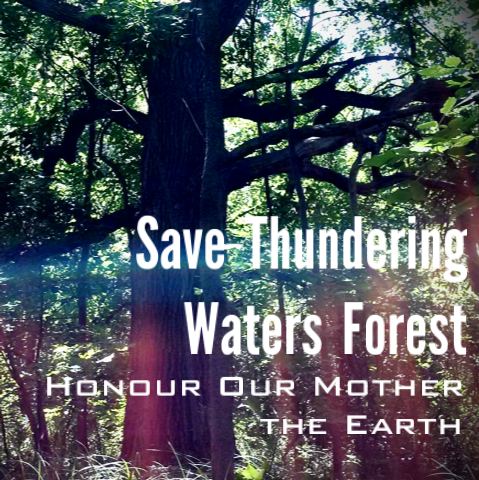Niagara Falls, Dish With One Spoon Territory, Turtle Island
August 20th, 2016
Please note that citation of Canadian case law and/or academic sources does not necessarily serve as approval, endorsement or any other type of validation of said reference material by author or the authors clan family, nation, and confederacy.
The Treaty of Niagara 1764 is a ratification of the general principles of the Royal Proclamation of 1763 with the Crown government by the co-signatory First Nations when the parties are upholding the principles of the agreement. The principles of these agreements acknowledge that agreements between Indigenous governments and Canadian or Crown officials have some terms which fall outside of Canadian law(R. v. Calder). This is why the figurative and metaphorical use of wampum, mnemonic devices and oral custom is as important as any written record (Corbiere). The Treaty and the Proclamation are the foundation of terms for the reciprocal rights of Canadians and First Nations (Borrows).
In order to honour the principles of these agreements governments have to uphold the honour of the crown(R. v. Lefthand) and act in accordance with the principles of the covenant chain(Borrows) and the Two Row Wampum(Hill).
Niagara, specific to the Treaty, was acknowledged for the importance of its resources to Anishinaabe, Haudenosaunee and British people alike (Corbiere). This is where the principles of the Dish with One Spoon, an agreement to keep resources held as commons, came into play. It was to be understood that the resources were to be shared in perpetuity(Nanfan). Nobody could empty the contents of the dish without being sure it would be replenished (Corbiere).
I contend that:
- By altering large portions of an interconnected slough forested wetland complex the development proposed for the Niagara Falls Slough Forest Wetland Complex (herein to be referred to as “the development”) jeopardizes the integrity of the complex and the adjacent areas including species paths, waterways and the Niagara River which is less than 4 miles from the point of the development furthest from the river.
- Therefore the development opposes the terms of the Treaty of Niagara by ignoring the principles of the Dish with One Spoon and the Two Row Wampum and invalidates the developers ability to act within the responsibilities of the honour of the crown. And;
- Therefore the development is in opposition to the hunting resource treaties including but not limited to the Treaty of Albany 1701 (Nanfan).
It would be dishonourable to proceed with this development as planned. It directly opposes the inherent right of occupants of this territory to expect governments to work within the terms of existing Treaty arrangement.
Works Cited
Borrows, John. “Wampum at Niagara: The Royal Proclamation, Canadian Legal History, and Self Government.” Aboriginal and Treaty Rights in Canada, Edited by Michael Asch, Vancouver: UBC Press, 1997, pp. 155-172.
Corbiere, Alan Ojiig. “Diplomatic Metaphors and Symbolism on Wampum Belts.” Anishinaabewin Niiwin: Four Rising Winds (2013), Edited by Alan Ojiig Corbiere, Mary Ann Naokwegijig Corbiere, Deborah McGregor, and Crystal Migwans. M’Chigeeng, ON: Ojibwe Cultural Foundation, 2014, pp. 47-64.
Hill, Rick. “Talking Points on History and Meaning of the Two Row Wampum Belt.” Honor the Two Row, March 2013, http://honorthetworow.org/wp-content/uploads/2013/03/TwoRowTalkingPoints-Rick-Hill.pdf. Accessed 20 August 2016.
Nanfan, John. “Treaty of Nanfan.” Historical Dates (Treaties, Preconfederation Documents, Etc.). Six Nations Lands and Resources, 17 Mar. 2009. Web. 20 Aug. 2016.
R. v. Calder. Supreme Court of Canada. 1973. Supreme Court of Canada.
R. v. Lefthand. Alberta Court of Appeals. 2007. Alberta Court of Appeals.

